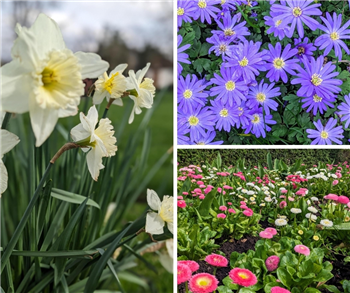Welcome to E-Borough Insight

Hello,
Welcome to the April edition of our newsletter, eBorough Insight.
We hope you all had a fantastic Easter break. It finally feels like spring has arrived: days are getting longer, the weather is improving and the flowers are out again in Rosebery Park (as pictured above). We have many parks and open spaces throughout the borough, and we hope everyone will be able to get out and enjoy them as the warmer weather arrives.
This month we have news and updates from Epsom & Ewell Borough Council including the launch of a new fast track planning application service, changes to the way our tennis courts operate, a free boiler upgrade scheme for those on low income and much more.